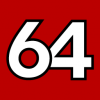-
Posts
12428 -
Joined
-
Last visited
-
Days Won
554
Content Type
Profiles
Forums
Events
Everything posted by Fiery
-
We've tried that, but it didn't help to prevent minimizing SensorPanel with Windows key + D. AIDA64 Preferences already implements a Prevent SensorPanel from being minimized option. That's all we could do about this issue. As I've explained before, transparency for the SensorPanel is not possible. You can however take the wallpaper, slice out a portion of it and put it as the SensorPanel background image, to imitate a transparency effect. Many users went down that path and use SensorPanel with good results.
-

Possible BSOD because of Stability settings
Fiery replied to hvgsel51's topic in Hardware monitoring
My first idea would be AI Suite, but I suppose it only works on desktop PCs. Do you have any Asus software installed on your laptop, one that may perform system monitoring? -

Possible BSOD because of Stability settings
Fiery replied to hvgsel51's topic in Hardware monitoring
AIDA64 performs low-level operations that might collide with other services or processes (or the UEFI layer, or a Windows driver) in rare occasions. So yes, while constantly monitoring your system with AIDA64, it is possible that the monitoring feature causes a system error, but it's a very rare issue that fortunately plagues not many PCs around. Of course, the issue may not be related to AIDA64 at all It's quite difficult to diagnose such issues, unless of course the BSoD is more meaningful or the issue comes up more regularly. Regards, Fiery -
If you configure port forwarding, then you could use it outside from your LAN, via the internet.
-
1) Open AIDA64 on your main rig, go to main menu / File / Preferences / Hardware Monitoring / LCD, click on the RemoteSensor tab, change the port to 8080, check enable. 2) Windows and/or your firewall software may pop up a message box warning you about a software (AIDA64) opening the 8080 port. Just allow it 3) On the Android device open Chrome or your preferred web browser, and enter your main rig's IP address (which you can find on the Computer / Summary page in AIDA64, look for Primary IP Address there) and :8080 as the URL, like this: http://192.168.0.1:8080 4) A splash screen should appear in your web browser informing you about the resolution you're supposed to use. 5) Go back to AIDA64 / main menu / File / Preferences / Hardware Monitoring / LCD, uncheck the enable option, and enter the resolution the splash screen stated. Then check enable again. 6) Go back to AIDA64 / main menu / File / Preferences / Hardware Monitoring / LCD / LCD Items, and you can start building your own LCD layout. Regards, Fiery
-

2 same GPUs, different scores
Fiery replied to wONKEyeYEs's topic in Benchmarking, system performance
Even if the cards have the same GPU and similar core clock and/or boost clock, their cooling and actual thermal status could be very different. Modern video cards could perform better if they're cooler, since their GPU could use boost clocks more at a cooler state. So even by using 2 of the same video cards, the scores could be different if one card runs cooler than the other. BTW, according to the specs, your Gigabyte card uses 5000 MHz effective memory clock, while the Sapphire card uses 4500 MHz, so there's a considerable difference there. Regards, Fiery -
That seems to be a LCDsysinfo device that AIDA64 doesn't support. LCDsysinfo (both generations) sadly does not support direct bitmap display through USB connection
-
Yes, you should. As long as your notebook is properly constructed by MSI, our stress test wouldn't harm it. But, if you're afraid of it, just don't run the stress test
-
1) No, the AIDA64 System Stability Test didn't harm your system. 2) Maximums clocks cannot be achieved when all components of the system is under heavy stress. Turbo Boost cannot push the clocks to the maximum level when all cores are under such high level of load that AIDA64 puts on them. Regards, Fiery
-
I didn't mean losing the SensorPanel because you move the window out of the desktop area. I meant a situation when you either change your monitor or lower the desktop resolution. If e.g. you place the SensorPanel at a point of X = 1200 and Y = 0, and you lower the desktop resolution to e.g. 1024x768, and AIDA64 wouldn't automatically put the SensorPanel back to the new desktop area, the SensorPanel would become invisible to the user. And when that would happen, he wouldn't be able to move it back at all, since no part of the window would be visible or draggable on the desktop area. In such a situation the user would have to close AIDA64 and remove the relevant Registry entries using REGEDIT, which is far from being the most user-friendly or easy-to-handle method
-
I'm afraid we've tried but haven't found a solution to this issue When you use Windows scaling, font is automatically scaled, no matter if you write text on a window or on a bitmap that you send to the Logitech LCD. However, in case you plan to keep the 125% setting, you may be able to set the font size to a smaller setting with your LCD items, so when they are scaled up 125%, you get the right size of text.
-

New LCD device support: Samsung SPF Digital Photo Frames
Fiery replied to Fiery's topic in Hardware monitoring
I'm afraid AIDA64 LCD module doesn't support that. Thank you for the feedback. I'm not sure if you're talking about the classic Intel CPU throttling value there. Throttling is a single percentage value that shows if the CPU is overheating at any given time. If you mean a different throttling value, then please show us (with a screen shot or a link) what you mean. -
We would be hesitant to add such a feature to AIDA64, since it would let you lose the SensorPanel window completely. SensorPanel is automatically put back to the visible Windows Desktop area to make sure there's no such situation when the SensorPanel gets completely out of any desktop area and so get unmovable and unreachable by the user. You can hide/show the SensorPanel using the right-click context menu of the AIDA64 System Tray icon though. For most users it's a good solution to quickly hide/show the SensorPanel. Regards, Fiery
-
I'm afraid it cannot be done with AIDA64 OSD Panel, but it is possible with the SensorPanel. Regards, Fiery
-
I'm afraid we have no information on how to read battery level of PS4 controller. If you could give us a direction on how to obtain the necessary programming details, we could add it to AIDA64. Regards, Fiery
-
I've replied in the other topic. I apologize for the delays. Regards, Fiery
-
Dreadnought & DocCruncher: 1) Does your Windows user have administrator privileges? 2) Is AIDA64 installed originally using the self-installer EXE package? 3) Do you get the error only once, or no matter how many times do you try to update, you always get the same error?
-
It's not possible to put such an item to the LCD yet. We'll implement it soon, and I will get back to you in this topic Thanks, Fiery
-
Please upgrade to the latest beta version of AIDA64 Extreme available at: http://www.aida64.com/downloads/latesta64xebeta Let me know if it helps
-

Logitech Arx Control LCD for smartphones and tablets
Fiery replied to Grestorn's topic in General Discussion
We've fixed that up in the latest AIDA64 Extreme beta update: http://www.aida64.com/downloads/latesta64xebeta Thanks, Fiery- 71 replies
-

Cannot connect to MySQL Database
Fiery replied to lion_kg's topic in Network audit, change tracking, SQL databases
Yes, we aware of the fact that it would be possible to implement native support for certain database servers, but as you pointed out, it's not a generic solution that could be future-proof or "fool-proof" -
I'm afraid no. Corsair still hasn't got a SDK or other facility that would allow 3rd party applications to connect to the Link framework without using any hacking tricks.
-
I suppose it's because you've configured the wrong pixel resolution in AIDA64 Preferences. You shouldn't use the native resolution of your device, but the resolution reported by the web browser of your device. In many cases that is a much lower resolution than the native resolution, like 1/3 of the native pixel values. Try to hide all items on your layout, and check the splash screen AIDA64 displays on your device: it will inform you about the resolution you have to use. E.g. on my Galaxy Note 3 the resolution I have to use is 360x495, as opposed to the actual native resolution of 1080x1920 pixels. I've tried the new LGS application along with the new Arx Android app update, and automatic connection no longer works It seems Logitech will have to issue one more update to their Arx framework. We've reported the issue to our contacts at Logitech.

